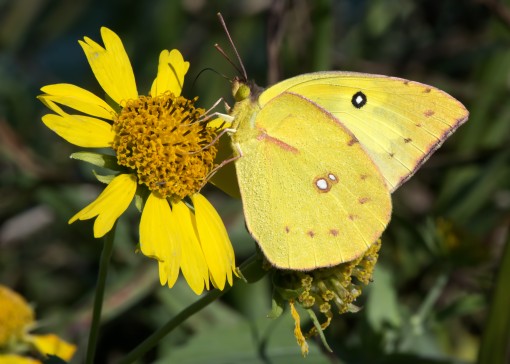Autumn Blooms and Butterflies
November 4, 2013 | By Shoal Creek Conservancy
This blog post was written by Ted Lee Eubanks. To learn more about the author, please visit this site.
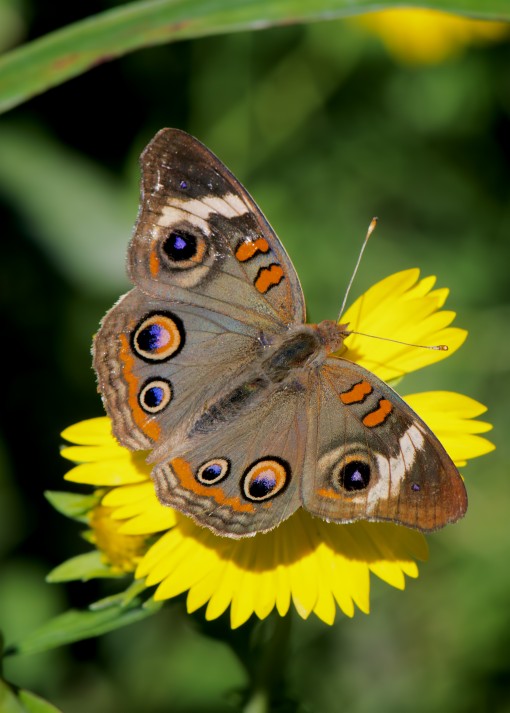
The autumn rains, while devastating for some, were manageable in the Shoal Creek Valley. Both of the major October rains dropped between 5 and 7 inches in our watershed, nothing like the deluges in Barton Creek or Onion Creek. For Shoal Creek, the rains were a blessing, not a bane.
The rains also came after a summer of drought, and many of our native plants have responded. Engelmann sunflower, sawtooth sunflower, and Texas aster are erupting into their late fall glory. With flowers come butterflies, only accentuating the colorful palette that tints Austin this year.
I spent a few hours this weekend photographing butterflies nectaring on sawtooth sunflowers. This is the end of the year and line for many of these butterflies. A freeze will bring this life cycle to an end. Yet for this moment butterflies are at their most diverse and abundant in Austin.
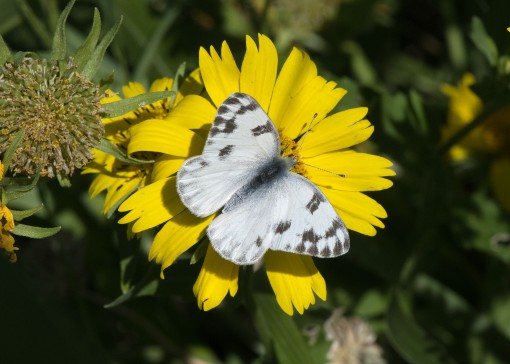
A few of the butterflies, such as the checkered white, are infrequently seen in the Shoal Creek Valley. The checkered white, also known as the southern cabbage butterfly, is known to be more common in late summer and fall. Perhaps I only see them now because they are only reaching adulthood late in the season. The caterpillar of this butterfly feeds on the various cabbages (including broccoli and brussel sprouts).
Another seasonal favorite is the common mestra (Mestra amymone). This butterfly ranges from Costa Rica north to south Texas. In late summer, however, the butterfly may range as far north as South Dakota. I do not see them in our area every year, and finding over a dozen this weekend was a blessing.
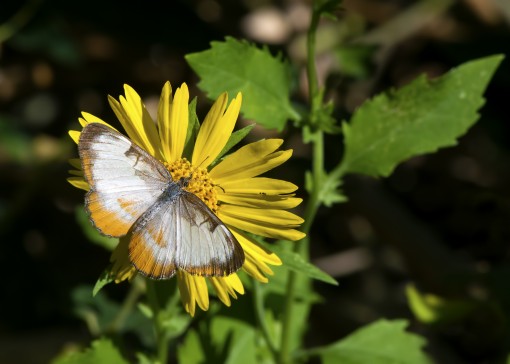
Several of the butterflies are dressed for the season. The variegated fritillary (Euptoieta claudia) is nomadic, and is seen in our area in late summer and fall. This fritillary is unlike many of the frits (as butterfly watchers like to call them) in that its caterpillar will feed on many species of host plants including the passionflowers. Euptoieta means “easily scared,” a lesson quickly learned by any photographer trying to chase one down.
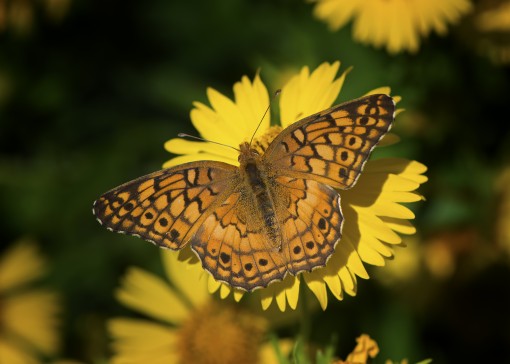
Many of the butterfly plants that I mentioned can be easily grown in your yard. Sawtooth sunflower (Helianthus grosseserratus) is a fantastic fall bloomer, and seems to be bulletproofed to our summer droughts. This sunflower gets large, though, so give it ample space. Lantana (Lantana horrida) is an excellent fall nectar plant, but I recommend sticking with the orange native rather than one of the cultivars. My favorite butterfly plants are in the genus Eupatorium, known as the mistflowers. A number of mistflowers species and cultivars will prosper in our area. I recommend the following for your yard, and all three are available at native plant nurseries.
- Blue mistflower (Conoclinium coelestinum)
- Gregg’s mistflower (C. greggii (dissectum)
- White boneset (once named Eupatorium havanense and now called Ageratina havanensis by many botanists)
Whether in your yard or in Shoal Creek Valley, this is the season to search out the butterflies that avoid our desiccating summer seasons. Enjoy the time outdoors!
